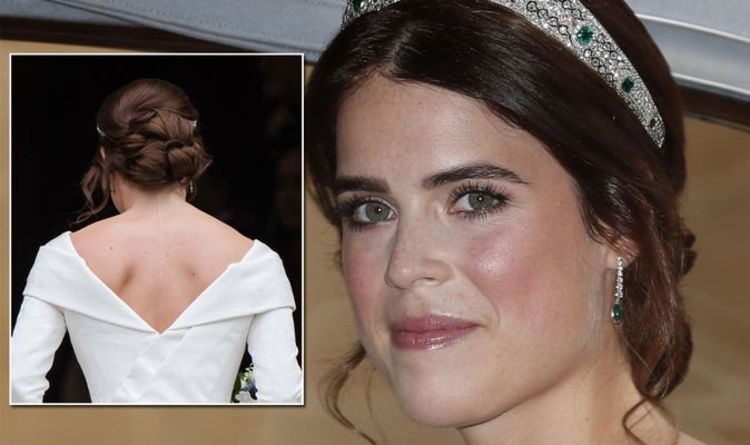Princess Eugenie health: 'My surgeons inserted eight-inch titanium rods into my spine'

“I was diagnosed with scoliosis,” the new mum – to baby boy August Philip Hawke Brooksbank – said. Married to long-term lover Jack Brooksbank, Princess Eugenie admitted her spinal surgery prevented her from having a “hunched” back. “I can still vividly remember how nervous I felt in the days and weeks before the operation,” Princess Eugenie recalled. The young princess was 12 years old at the time when she had the procedure at the Royal National Orthopaedic Hospital (RNOH), in Stanmore, that would confine her to a wheelchair.
“During my operation, which took eight hours, my surgeons inserted eight-inch titanium rods into each side of my spine,” she told the RNOH charity.
The 31-year-old added that the surgeons inserted “one-and-a-half inch screws at the top of [her] neck”.
“After three days in intensive care, I spent a week on a ward and six days in a wheelchair,” Princess Eugenie explained.
What is scoliosis?
“Scoliosis is where the spine twists and curves to the side,” said the NHS.
READ MORE: Zara Tindall and Mike: 5 best Royal Ascot 2021 pictures
Babies and toddlers
The curvature of the spine might improve over time, so treatment is not usually needed within a person’s youngest years.
However, a plaster cast or plastic brace may be fitted to stop the spinal curvature from getting worse as they grow.
Children
Older children may wear a back brace to prevent the spinal curvature from worsening as they get older.
“Sometimes surgery may be needed to control the growth of the spine until an operation to straighten it can be done when they stop growing,” the NHS explained.
Adults
Treatments for adults with scoliosis can include painkillers, spinal injections, or surgery.
Eight out of 10 cases, the root cause of scoliosis is unknown – medically referred to as “idiopathic scoliosis”.
Current medical consensus agrees that the condition “cannot be prevented”.
Scoliosis is not thought to be linked to diet, exercise, or bad posture.
However, there does seem to be a genetic link to developing the condition.
The charity Scoliosis Association UK noted that curvature of the spine in adolescent years is much more common in girls than boys.
One useful way to determine if a person has scoliosis is to perform the “forward bend test”.
This involves the person suspected of scoliosis (with their shoulders and spine visible) to bend forward from the waist, keeping their legs and arms straight.
Looking at the person from behind, look out for “a clear bulge on one side of the back where the ribs are” – this is a sign of scoliosis.





